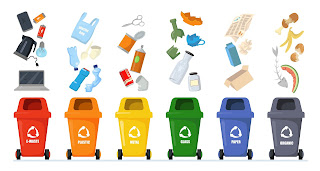Smart Business Sustainability Strategies for Long-Term Success
Sustainability has moved from being an optional corporate responsibility initiative to a core driver of competitive advantage. Businesses that integrate environmental, social, and ethical considerations into their strategy are better positioned to adapt to market changes, attract loyal customers, and meet regulatory expectations. This guide outlines practical and innovative business sustainability strategies that can help your business grow responsibly while making a positive impact.
1. Embed Sustainability in Your Mission and Goals
Sustainability shouldn’t be treated as a separate department—it should be part of your company’s DNA.
How to start:
-
Review your mission statement and ensure it reflects environmental and social priorities.
-
Set measurable sustainability objectives, such as reducing emissions by a set percentage or achieving zero waste by a specific year.
-
Align sustainability KPIs with overall business performance metrics.
2. Design Products with a Green Mindset
Product design plays a crucial role in reducing environmental footprint.
Consider:
-
Using recyclable or biodegradable materials.
-
Designing products that are easy to repair or upgrade instead of replacing entirely.
-
Offering modular components so customers can replace only what’s necessary.
Case in point: Furniture brands like IKEA have committed to making all products from renewable or recycled materials by 2030.
3. Optimize Logistics and Transportation
Transportation is a major contributor to carbon emissions, and optimizing logistics can make a significant difference.
Action steps:
-
Consolidate shipments to reduce trips.
-
Transition company fleets to electric or hybrid vehicles.
-
Use route optimization software to save fuel and time.
4. Partner with Green Suppliers
Your sustainability footprint extends to your supply chain.
Best practices:
-
Evaluate suppliers based on environmental standards and certifications.
-
Prioritize local suppliers to reduce shipping-related emissions.
-
Work with partners who are transparent about their own sustainability goals.
5. Leverage Technology for Sustainability
Modern tech tools can streamline sustainability efforts and make tracking easier.
Examples:
-
IoT sensors to monitor energy and water use in real-time.
-
AI-powered demand forecasting to minimize overproduction.
-
Blockchain for supply chain transparency.
6. Engage Customers in the Sustainability Journey
Customers are more likely to support a brand that lets them contribute to the cause.
Ideas to implement:
-
Offer discounts for customers returning used products.
-
Create awareness campaigns about how your brand reduces waste.
-
Share progress on sustainability goals through social media updates and packaging inserts.
7. Monitor, Audit, and Improve
Sustainability is an ongoing process, not a one-time project.
How to stay on track:
-
Conduct third-party sustainability audits.
-
Compare your performance against industry benchmarks.
-
Adjust strategies annually based on performance data and new innovations.
Conclusion
The most successful sustainability strategies combine innovation, efficiency, and transparency. Whether you’re a startup or a global brand, integrating green practices into your core business model will not only reduce environmental harm but also future-proof your organization in a rapidly changing world.
Adopting these approaches today ensures you’re not just meeting current demands—but also leading the way for a more sustainable tomorrow.



Comments
Post a Comment